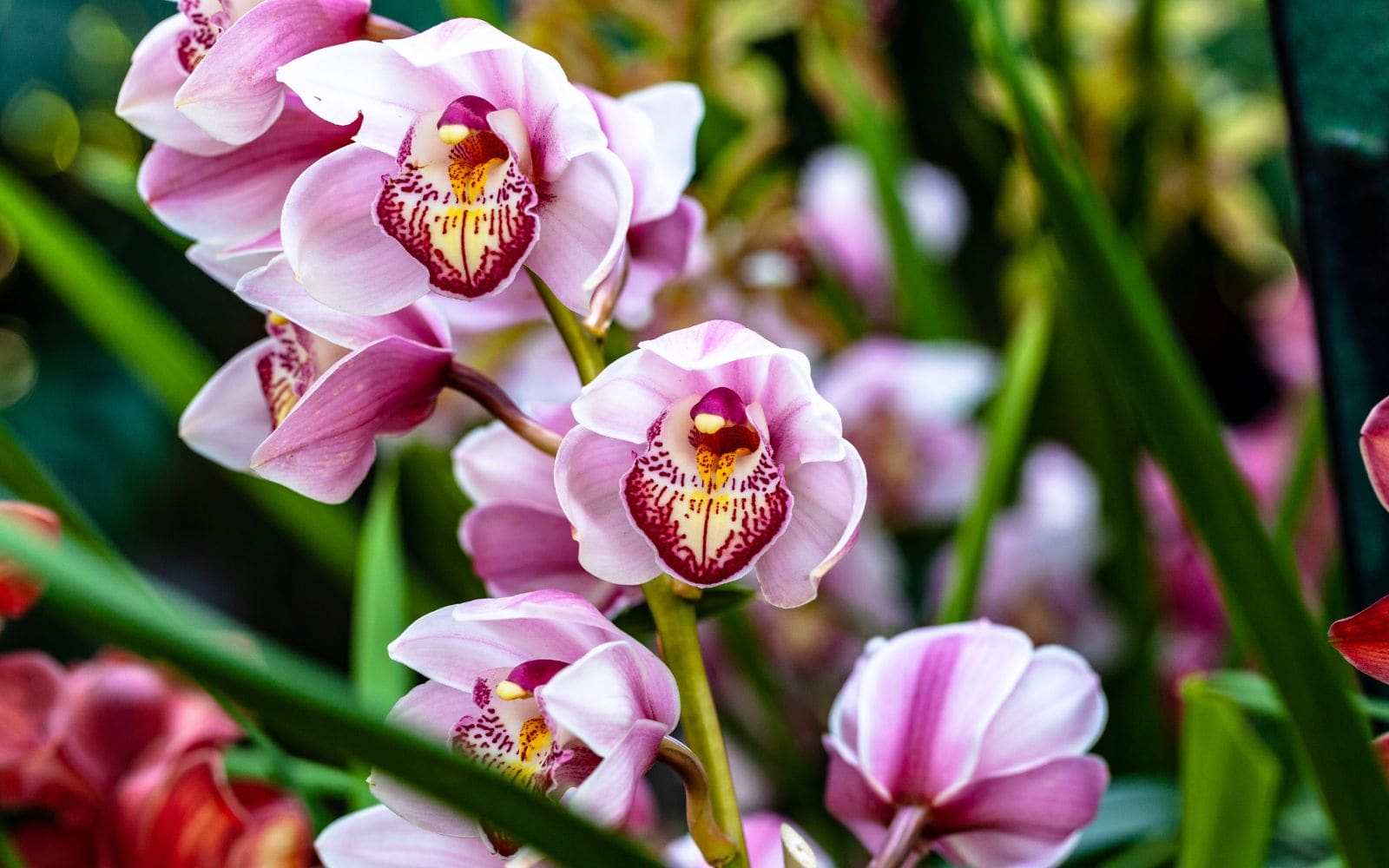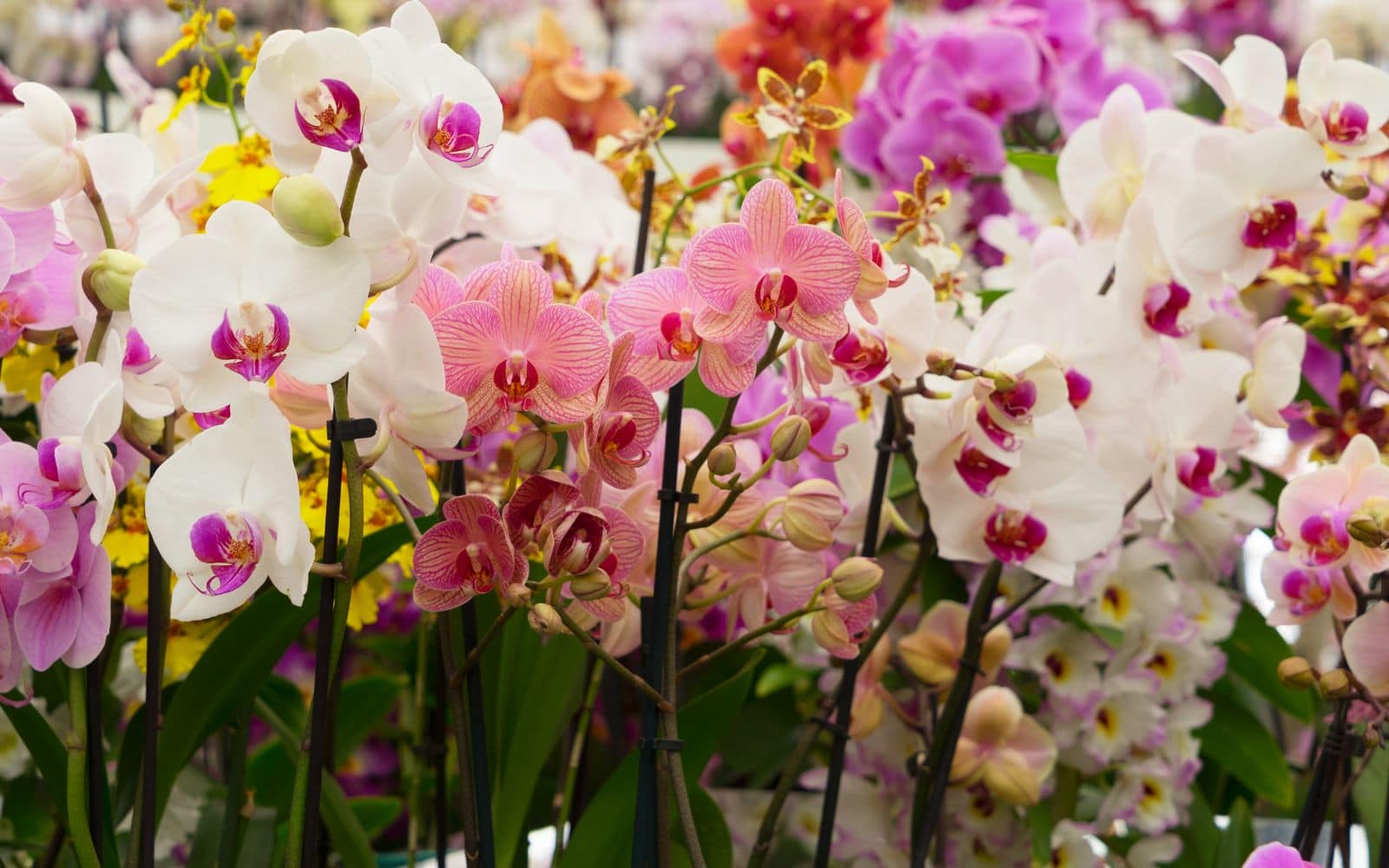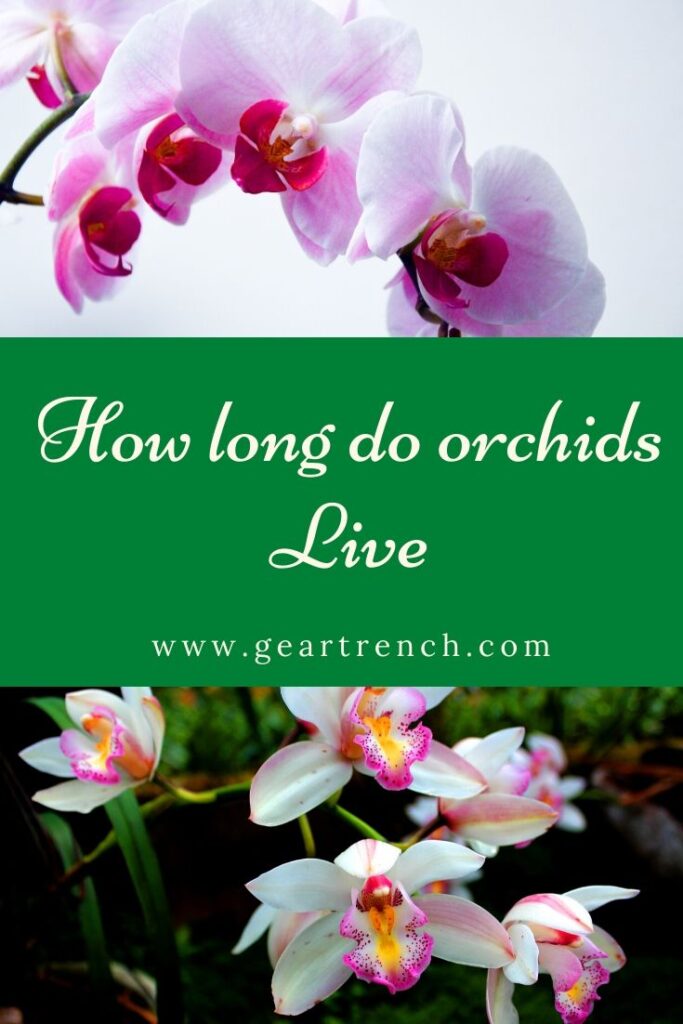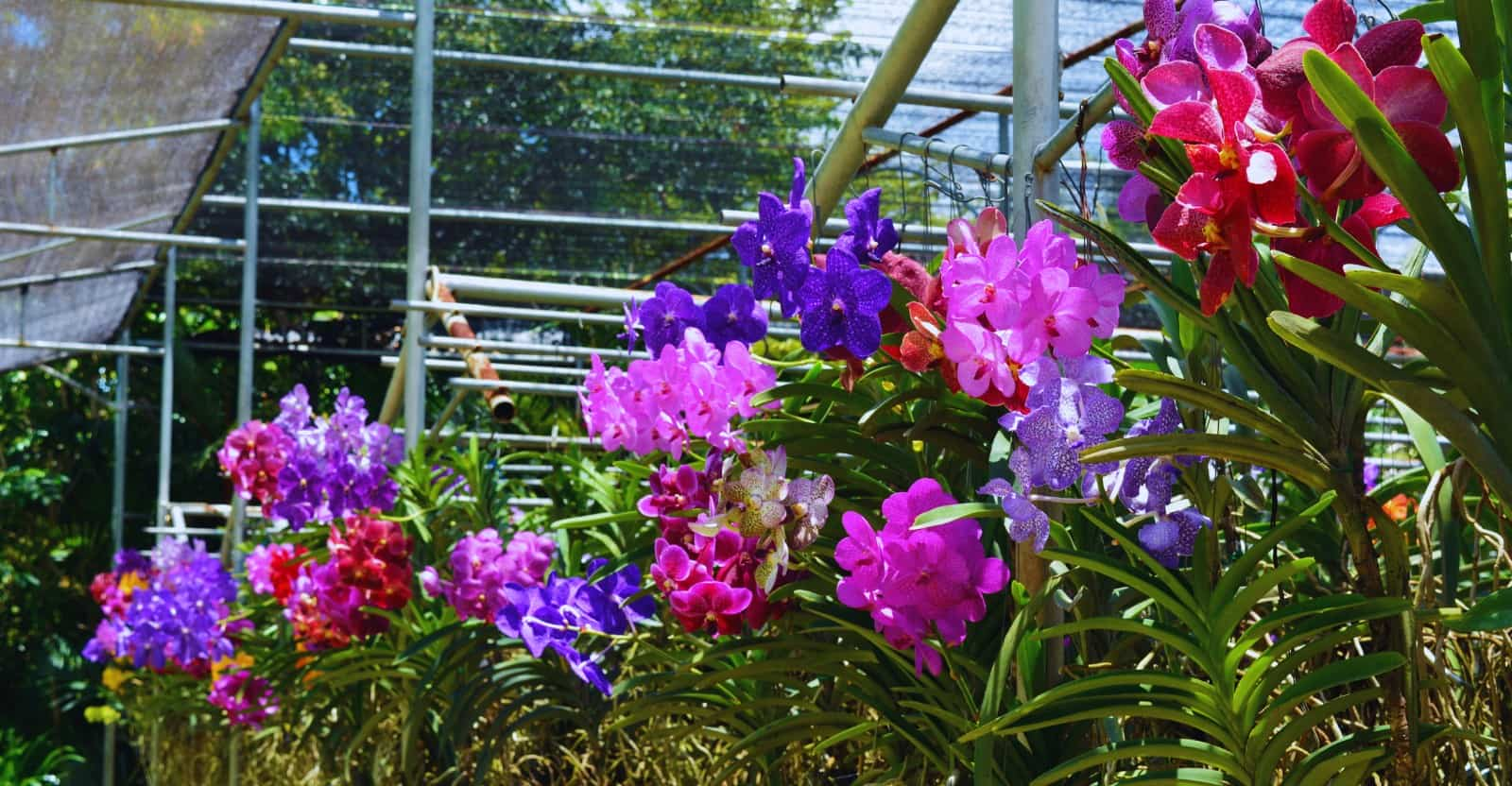Amazon has put together some great Home Gift Deals – save money and get your shopping done at the comfort of your home! Click here to see deals on Amazon
Growing orchids is an experience that few gardeners can forget. No other plant family offers such a wide range of diversity in intriguing flowers that orchids do.
In earlier times, orchids were only for the royals or rich people due to its astronomical prices at flower auctions. Now the time has changed. Anyone can grow an orchid as its less expensive and much easier to grow.
If you’re wondering with so much care, how long do orchids live, then the straight answer is a couple of decades – 20 to 22 years. The life of orchids depends on how well you take care of it and prevent it from pests and diseases.
Let’s find out how you can extend the life of orchids, such as Phalaenopsis orchid lifespan, and the steps that you can take to make orchids bloom faster and longer.
Do orchids live forever, and what is the life expectancy of an orchid?
Orchid is a beautiful and exotic flower that is a favorite among ornamental flower lovers. But there is also a common misconception that orchids don’t live long.
The wild orchids with favorable conditions can last several years to decades. But orchids don’t live forever. It dies naturally after a while.
Most hybrid orchids that come with bigger beautiful blooms can live 20 to 22 years with proper care. More than 70,000 crosses of orchids have been registered with the Royal Horticultural Society (RHS) with an average life span of 20 to 22 years.
At Singapore Botanic Garden, a cluster of tiger orchids has been growing in the same sport for the past 154 years. It’s believed to be one of the oldest orchid plants in the world. More tests are underway to determine whether it’s the same plant or new growth.

Are orchids annuals or perennials?
Orchids are perennials that, once planted, keep growing yearly. You can grow these in a home or a greenhouse. It’s vital that you properly take care of it to extend its life.
If you’re planting it indoors and will be away for less than a week, then you can water it thoroughly and move them to cool shady spots.
You can also wipe leaves with a damp cloth or tissues to remove grime so more light can reach plant tissues. That’s essential for the photosynthesis process for the orchid to convert nutrients into energy.
What is an orchid’s life cycle?
The orchid’s life cycle is no different than other plants. The life cycle of orchids begins with pollination either naturally through bees and insects or manually.
Once the orchid flower is pollinated, the seed form in a small capsule behind the flower. Orchid is a prolific seed producer. On average, each pouch contains thousands of small but delicate, pale yellow dust seeds.
Depending on the orchid species, the seeds mature from a few weeks to almost a year. For example, the Disa orchid takes only six weeks to grow. In contrast, Cattleyas and Cymbidium’s orchids can take up to 12 months to mature.
Orchid seeds aren’t self-sufficient to grow as it lacks endosperm. The endosperm is pulp around the seeds that provide nutrients to the seed.
In the wild, orchid seeds require a fungus to germinate. These are mycorrhizal or epiphyte types of fungi found in the soil for the seed to grow. The fungus lives in the orchid roots for its life that helps with absorption, and processes nutrients to the plant.
The hybrid orchids are grown in a laboratory. The orchid seeds form protocorm, a small green tissue cluster, that turns into small plants. The strong and healthy seeds are then potted in a pot where it grows through to maturity.

How long do orchids live?
Orchids are sturdy plants with a long life span. With proper care, most orchids can live around 20 to 22 years. But as time passes by, the foliage starts to become weak and produce lesser blooms.
You also have to keep the orchid free from pests and disease; otherwise, that may result in the premature death of the orchid. If you’re planting orchids indoors, then it can last 10 to 15 years with proper care.
Make sure you properly water the orchids as orchids can’t live without water for too long, and in a week or two, the leaves start wilting and dying. In the wild, the orchids can last several decades up to a century.
Read More: How Much Does a Yard of Dirt Weigh: Handy Reference Guide
How long do orchids take to grow?
Orchid takes anywhere from a few months to a year to grow. The plant has a diverse range of life cycles, reflecting their different habitats.
The orchids have two distinct growth patterns. The majority are described as being sympodial. In this, the branched rhizome produces a succession of shoots that stop growing when they mature.
The monopodial orchids have a fan of leaves that is a single shoot and grow indefinitely from its apex. Most orchids take anywhere from 8 to 12 months to mature and start blooming. As orchids are perennials, they typically re-bloom once every 8 to 12 months.
How often do orchids bloom indoors?
The orchid blooming frequency depends on the orchid. Some orchids bloom only a couple of days while some have flowers that can last from a few weeks to a couple of months.
If you want long-lasting orchid flowers, you should choose slippers and moth orchids.
Many orchid species bloom once a year, while others can bloom two or three times a year. The orchid flowers have a club-like structure that contains both male and female parts of flowers called the column.
All orchid flowers have this unique structure with a large and conspicuous center petal called a lip. Two main factors affect the flowering of orchids directly: the temperature and day length.
Many orchid plants are stimulated to flower by the shorter days of autumn, others by the long days of spring. Cymbidiums and moth orchids (Phalaenopsis) need a drop-in temperature to trigger them to flower.
The orchid also needs to reach a specific size before the plant can bloom. So, if you have just planted an orchid, it may be a while before it starts blooming.
What do you do with an orchid after the blooms fall off?
After the orchid blooms have fallen off, you have two options: cut off the flower spike close to its base, or, if the plant is healthy, cut it at a point two or three nodes from the base. It stimulates the plant, and a new branch may grow and flower.
One of the most common varieties of orchids is a moth (Phalaenopsis), widely available from the garden center. Many people usually buy this variety of orchids as it’s easy to care for and proliferates.
You can repot moth orchids in spring. During this time, the temperature and sunlight level increase, and the plant develops thick, silvery roots with bright green foliage that resumes growing.
The moth orchids are epiphytes and like when their roots grow out of the pot and into the humid air. To encourage growth, you should repot it when you see the soil deteriorates, and compost begin to break down.
Don’t wait for the plant to show signs of distress with wilting and falling leaves to start repotting. If you see those signs, then you should immediately repot it.
To repot orchid, you should gently remove it from the pot without damaging roots. Place it in healthy soil with compost that isn’t wet and soggy.
You don’t have to repot it in a clear pot as it’s a common belief. The leaves can photosynthesize and provide the required nutrients to the plant without needing roots to take part. However, don’t repot in a big container. Orchids like its root to be squished in a small space.
Once repotted, you should start daily spraying on the plant and take care of it to not let water remain in the plant’s crown.
How to care for and regrow orchids?
It’s far easier to regrow orchids indoors as you can provide it with individual care daily. Here are some considerations to successfully regrow orchids at home.
Orchid growing temperature
Cool-growing orchids: Max temp in winter shouldn’t exceed 10°C to 13°C (50°F to 55°F)
Summer Maximum: 24°C (75°F)
Warm-growing orchids: Minimum temperature of 18°C (65°F) with a daytime temperature rise of around 10°C (17°F)
Find the right location
The indoor temperature tends to stabilize around 20°C (68°F) in the daytime but may get colder at night-time. You may be tempted to grow as many plants as possible into a small space if you’re building several orchid plants.
These plants must get enough air circulation around it. You can provide a good air movement with a fan that maintains an even temperature throughout.
A higher temperature may cause unsightly burning to the leaves, and moist, stagnant air promotes fungal problems. Also, maintain a proper distance of two feet between plants to stop the spread of pests.
Sunlight requirement for orchid
You should place orchids where it gets enough indirect sunlight. For example, Cattleyas orchids have tough leaves and thick cuticles.
These should be given as much light as possible without scorching the leaves. If you’re placing an orchid pot near the window, keep it a bit away from the glass.
Low light orchids such as Restrepias can be grown in more shaded areas such as on the floor where it’s also more humid.
Humidity is a must for orchid
Orchids like humid environments and humidity around 80 percent are optimum. The indoor should be consistently moist to provide the optimal growing condition.
You can increase the humidity around the orchid by regularly watering it with a can and filling trays with water. Often spray it with a fine mist sprayer to keep the leaves clean and plant humid.
Use the right amount of water
Many people overwater their orchids that causing its root to rot and die prematurely. There are no strict watering criteria for the orchid. You need to water depending on the temperature and moisture level in the soil.
You should water the orchid when the compost has dried out but not too dry. If the compost and soil get too dry, then it makes the rewetting of the ground difficult. You should water when roots are actively growing.
Always try to use rainwater if possible. You can buy a rain barrel to harvest rain. The tap water contains lots of minerals and chemicals, such as chlorine added to disinfect water, which may harm the orchid.
If you live where you get hard water with a high level of salt, then spraying it on leaves may cause a white deposit on the leaves. A build-up of salt in the compost causes the root to die.
As a guideline, you should water orchid in a pot once a week. In summer, with high temperatures, water it more frequently. Whereas in winter, water it once in two weeks.
Also, water early in the morning. During the day, the temperature rises that allowing the excess water on surfaces to evaporate before the sunlight can scorch the leaves.
Be careful not to let water collect around the shoots and crowns of plants. Stagnant water around the roots causes fungal and bacterial spores that grow around the root and make it rot.

Don’t forget to share this post







